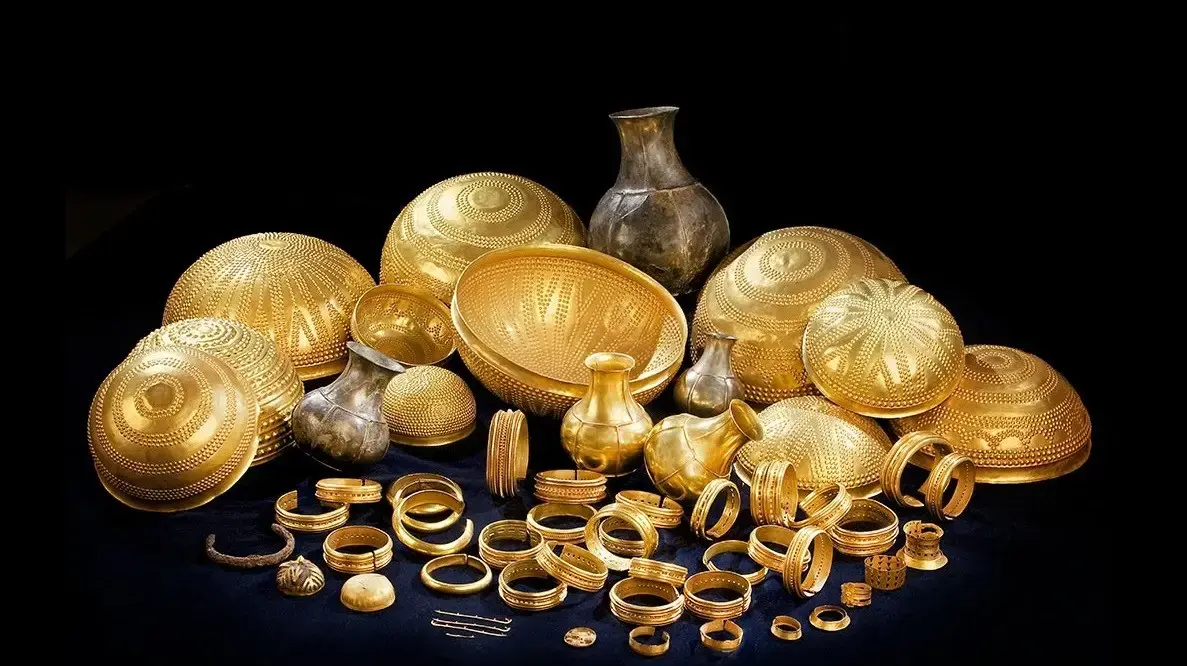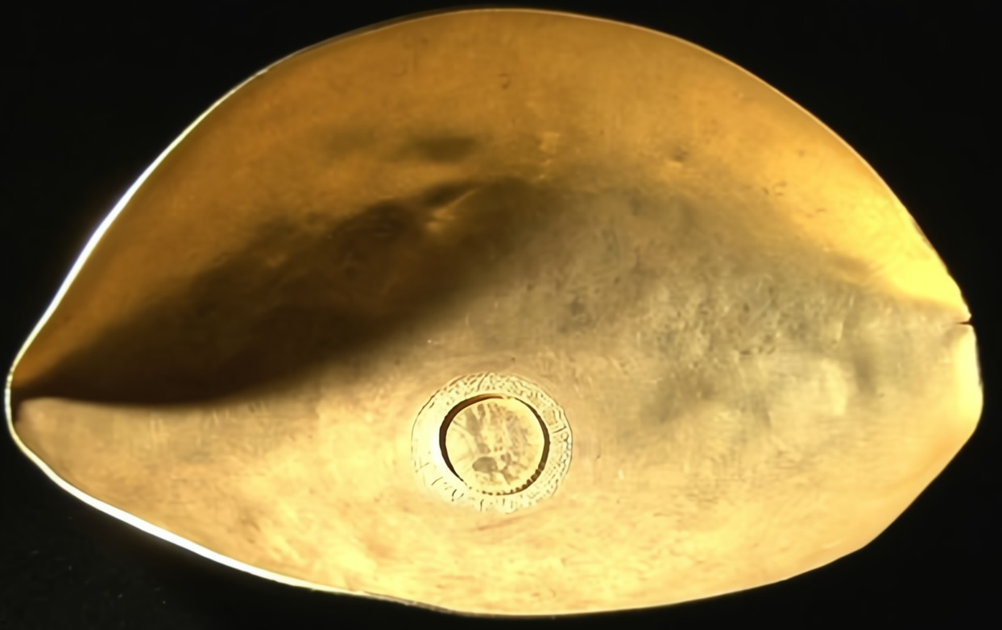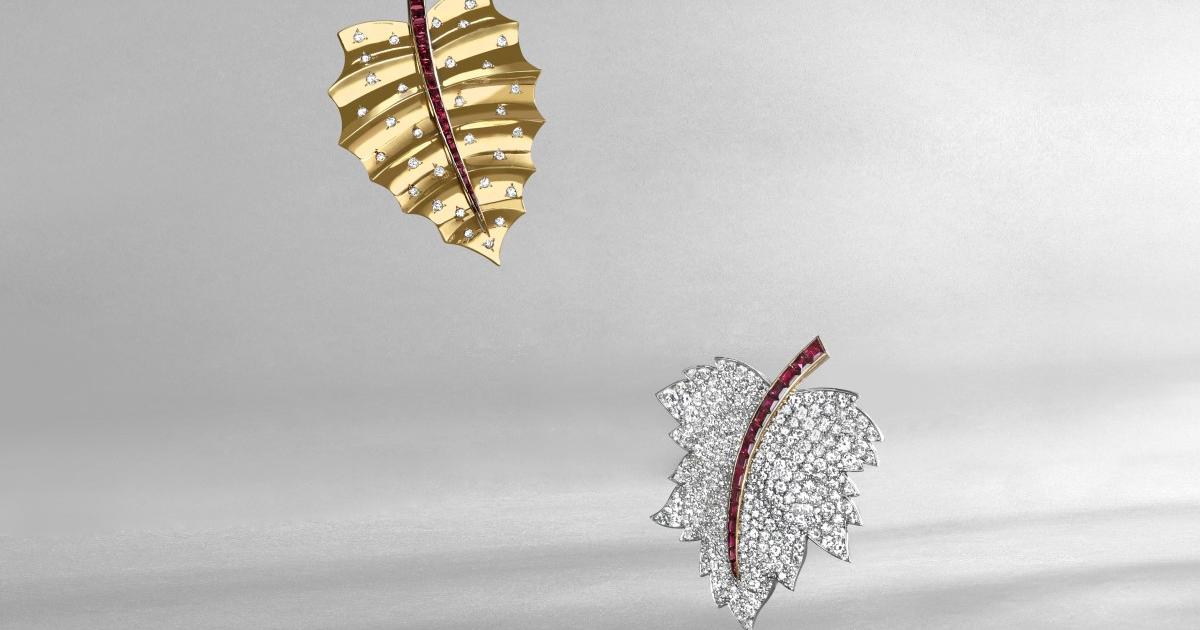All the coins were arranged against each other, as if they had just been arranged.
Beside them lay marvelous gold and silver jewels, buried for eight centuries.
This impeccably preserved medieval treasure was discovered in a field in northern Germany, not far from the Viking archaeological site of Haithabu.
The set would date from the 12th-13th century, announced in February the archaeological service of the State of Schleswig-Holstein (ALSH).
Two golden rings set with gems, a fragment of a ring, two large earrings loaded with precious stones as well as about thirty silver coins.
The unearthed jackpot impressed German researchers.
There is also a golden pseudo-fibula struck in imitation of an Almohad dinar.
Arabic coinage - which in all likelihood served as a model for this clasp - circulated widely in Scandinavia during the Viking Age, between the 8th and 11th centuries.
The
“remarkable”
pair of earrings, finally,
“is part of the tradition of Byzantine goldsmithing”
, specifies the ALSH in a press release.
Read alsoA wreck of the French East India Company identified at the bottom of a port in the West Indies
danish treasury
What were so many beauties of metal doing under the soil of Schleswig-Holstein?
The dating of the treasure indicates a cache after the occupation of the Scandinavian counter of Haithabu.
Located on the current site of Hedeby, this important Viking center classified by Unesco was razed in 1066 during a Slavic raid.
Coins, on the other hand, are more useful for dating the burial of this set.
Their examination revealed to numismatists the name of Valdemar the Victorious, who ruled Denmark between 1202 and 1241.
The fake dinar discovered not far from Haithabu.
Archaeologisches Landesamt Schleswig-Holstein
As to what circumstances led to the creation of the treasure, that is another matter.
The excavation of the site, a pit of 4 m2, revealed just a few traces of a textile.
Thin remnants of what must have been a bag or some fabric that wrapped this precious set.
Was it spoils of war or heritage hoarded for better days?
Mystery.
Read alsoPyramid of Cheops: extraordinary discovery of a corridor, hidden for 4500 years
An absurd detail has finally interfered in the history of this treasure.
It was not discovered during a formal archaeological site, but during a more picturesque operation: in full examination for a detectorist.
In Germany, the recreational use of a metal detector is subject to an authorization from the regional archaeological authorities, which can only be issued after training for aspiring detectorists.
However, it was precisely during an examination of this kind, carried out by an archaeologist from the ALSH, that a novice prospector made the fabulous discovery.
In France, the Heritage Code prohibits unauthorized excavations or surveys, and the use of a metal detector for the purpose of archaeological research is subject to administrative authorization.
In recent years, French archeology players have multiplied awareness-raising and educational measures, in order to prevent the unauthorized use of metal detectors by amateurs, whose action involves the looting and destruction of archaeological sites. .






